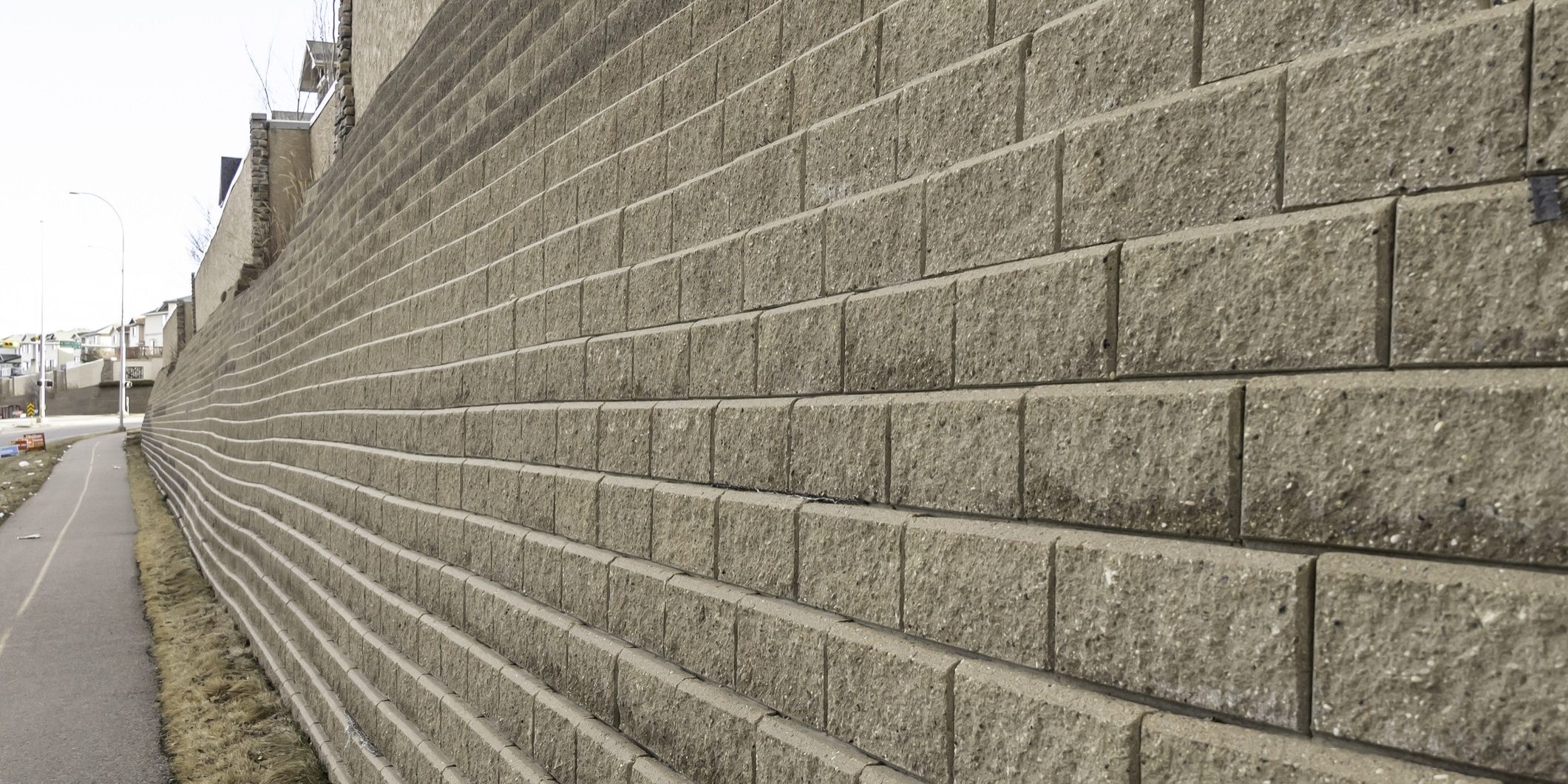
Retaining Wall Failures and Construction Defect Claims
What is a retaining wall?
A retaining wall is any vertical wall structure built to hold soil behind it and prevent that soil from moving. A retaining wall allows the soil grade to be at different elevations at the bottom and top of the wall rather than the sloped soil that would otherwise have to exist. A variation on a retaining wall is a seawall or bulkhead that has ocean or lake water on one side and holds back soil on the other.
Retaining walls range from a foot or two tall to fifty feet or more. There are also several different forms of retaining walls including gravity retaining walls, pile retaining walls, cantilevered retaining walls, and anchored retaining walls. Building codes and industry standards specify that a retaining wall of a few feet can be built without an engineered design, but for any retaining wall over a certain number of feet, [1] an engineer must design the wall to ensure it is able to withstand the force on the wall created by the soil behind it.
What causes a retaining wall to fail?
A retaining wall will fail when it is unable to withstand the force on it created by the soil behind it. A retaining wall failure can be the result of an inadequate design for the wall or the improper construction of the wall.
A design error leading to a retaining wall failure can be the selection of a retaining wall type or size insufficient to withstand the forces that will act on the wall. For example, a gravity retaining wall holds back the soil behind it and resists the resulting forces mainly through the weight of the wall. If the size of the gravity wall designed is not sufficient to withstand the forces that will act on that wall, the wall will eventually fail.
A common cause of retaining wall failures is a design that does not provide for or a contractor who does not install sufficient drainage behind the wall. Without proper drainage elements, a retaining wall will cause water to build up in the soil behind the wall. Water is heavy, and as it builds up in the soil behind the wall the force acting on the wall dramatically increases. At some point, that force may exceed the capacity of the wall and cause the wall to fail. To prevent failures of this type, retaining walls must be built with specific well-draining soils or other materials behind the wall and drainage components at the base of the wall so that water can drain through the soil and out from behind the wall.
What are the signs that a retaining wall is failing?
Typically, a retaining wall does not experience a catastrophic failure without first showing signs that the wall is beginning to fail. Common signs that a wall is slowly failing include cracking in the wall, bulging or deflection of the face of the wall, and tilting of the wall. If a retaining wall shows any of these signs, it is likely time to have the wall evaluated.
What damages can be caused by the failure of a retaining wall?
A failing retaining wall often causes the soil behind the wall to begin moving as the wall moves. Movement of the soil held back by the wall will cause damage to any structure supported by that soil. For example, if a home sits back from the failing retaining wall, the movement in the retaining wall and the resulting movement in the soil will cause the foundation of that home to move. That foundation movement will then cause damage to the rest of the home. The homeowner may see cracks in drywall, bricks, or flooring and may notice that doors and windows in the home are difficult to open.
In the worst cases, where a failing retaining wall is not repaired and a catastrophic failure occurs, a structure behind the wall can completely lose the support of the soil below it and collapse. Such collapses not only can result in the destruction of the structure but can also injure the occupants and others in the area. For examples of such a retaining wall collapse situation, see here, here, and here.
What is needed to bring a legal claim based on a retaining wall failure?
Retaining walls should not fail, and any failing retaining wall is likely to result in a legal claim against the builder. If you notice signs of retaining wall failure on your property, consult a construction defect lawyer or engineer as soon as possible.
As should be apparent from the discussion of retaining wall failures here, a retaining wall is not as simple as stacking up blocks to hold back dirt. A retaining wall involves a complex interaction of soils, groundwater, forces, and wall designs. Anyone impacted by a retaining wall failure and looking to pursue legal claims for their damages should ensure that they have a lawyer both knowledgeable on the details of retaining walls and with contacts with an engineer expert experienced in the design and evaluation of retaining walls. A retaining wall failure is not the type of case you want just any lawyer handling.
Elliotte Quinn, attorney at the Steinberg Law Firm, has experience pursuing claims for retaining wall failures and soil failures generally. He also has connections with engineers who specialize in the design and evaluation of retaining walls and soil slopes. He can use that knowledge and experience, as well as his general construction defect knowledge and experience, to get you the maximum compensation for your damages.
[1] The International Building Code specifies that retaining walls of four feet or less can be built without an engineered design.




















